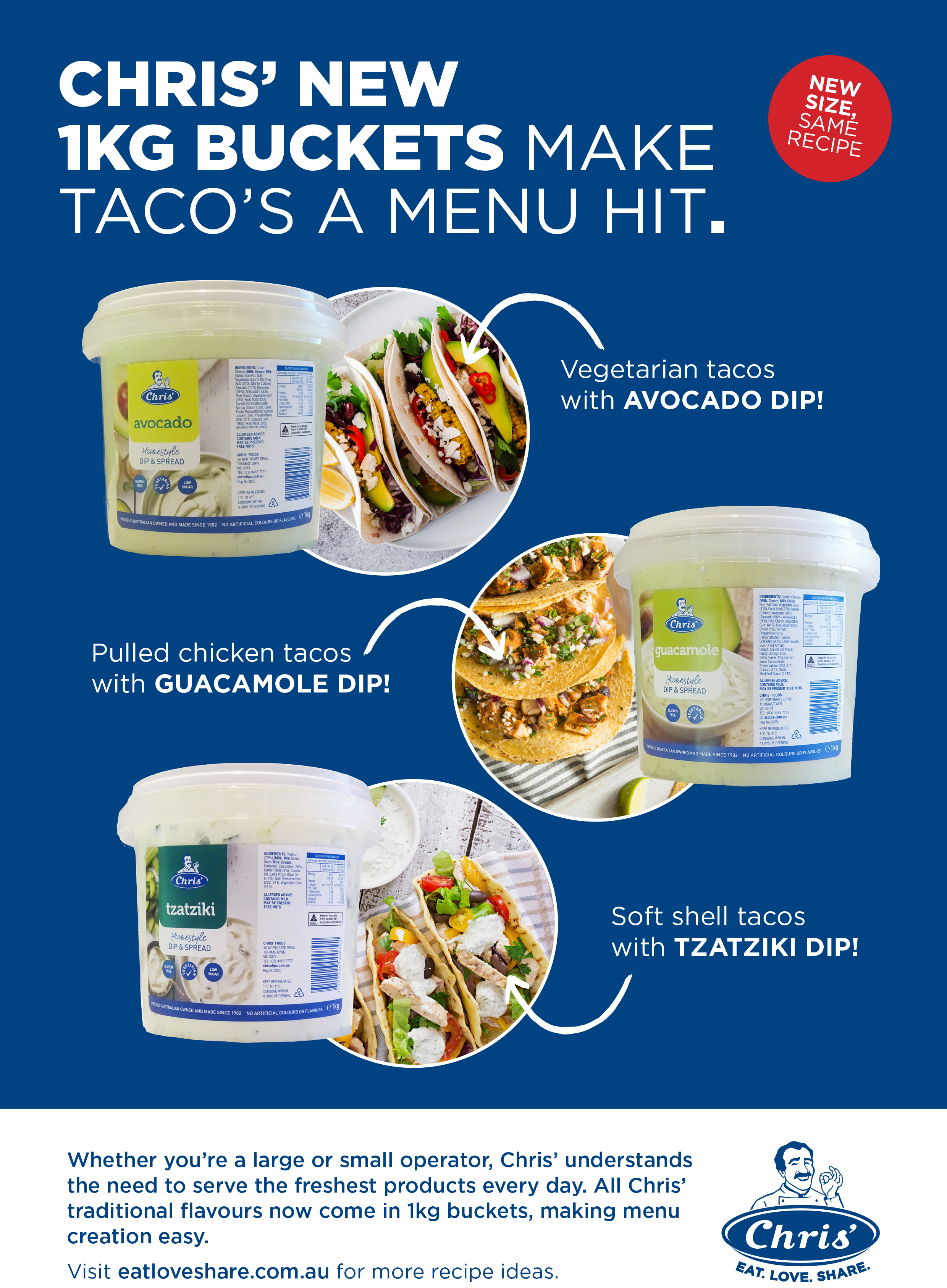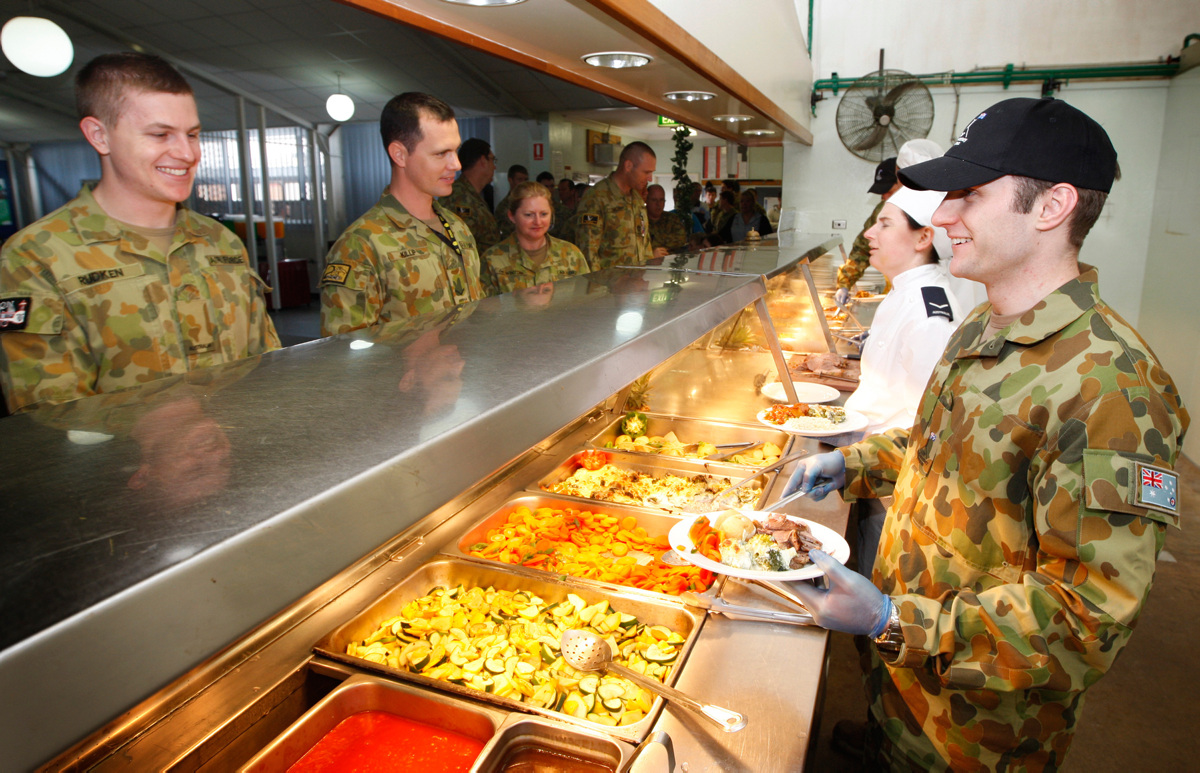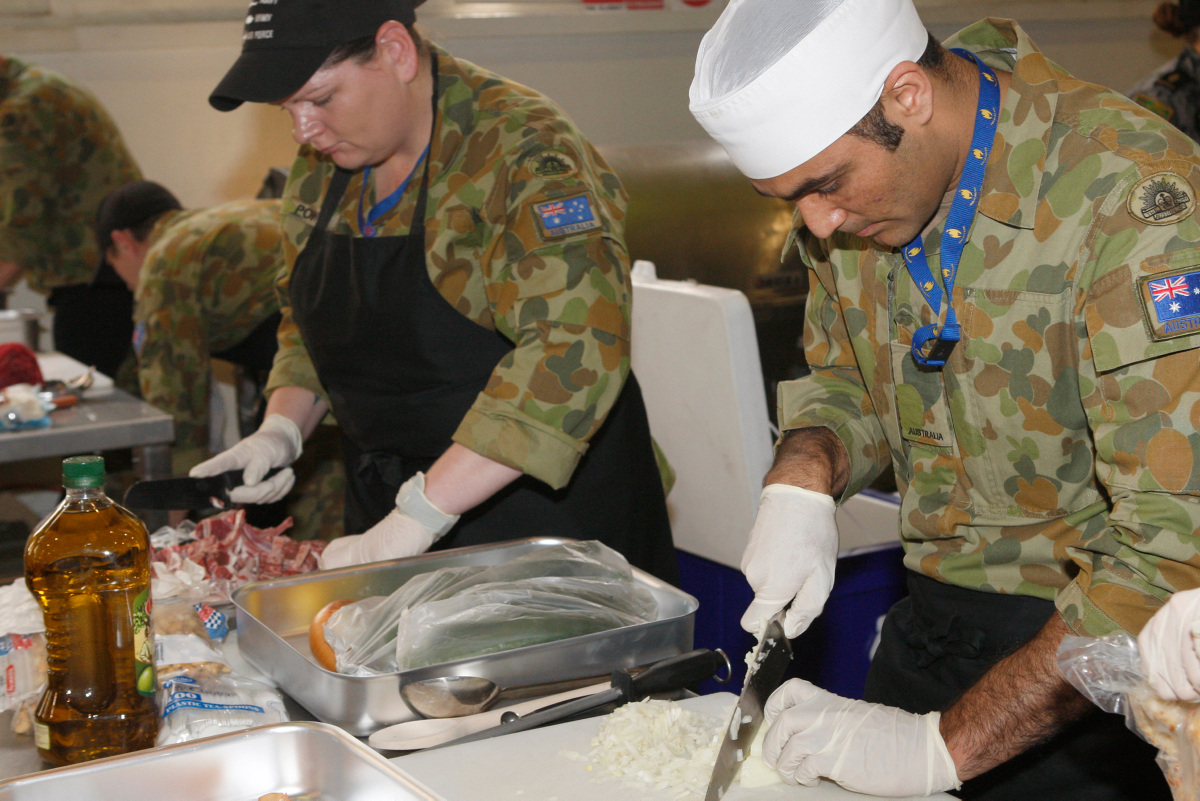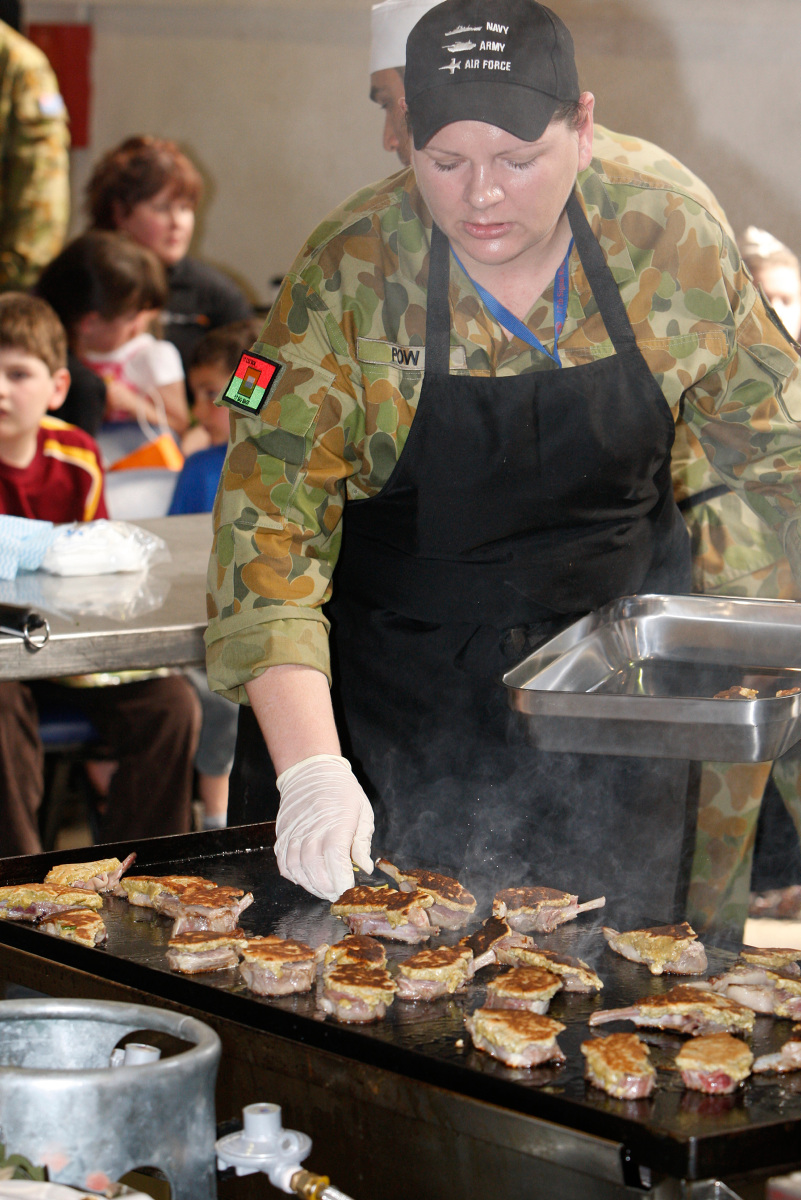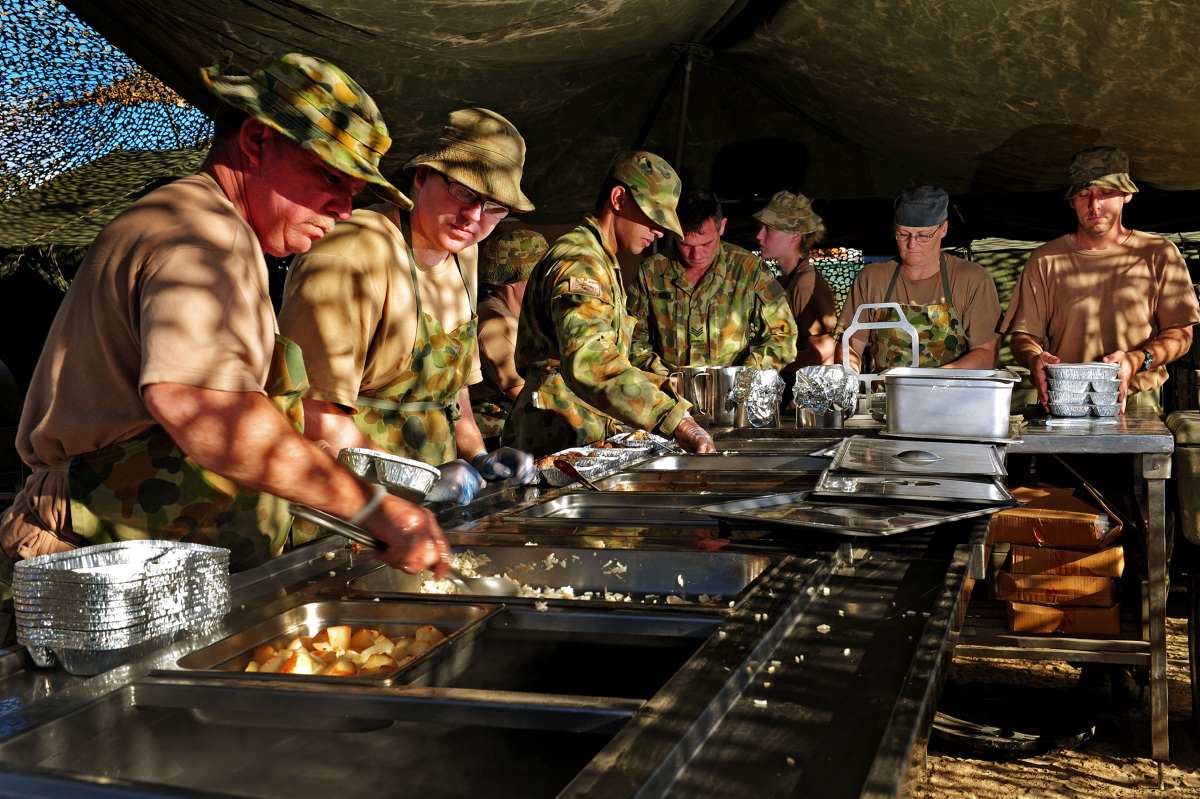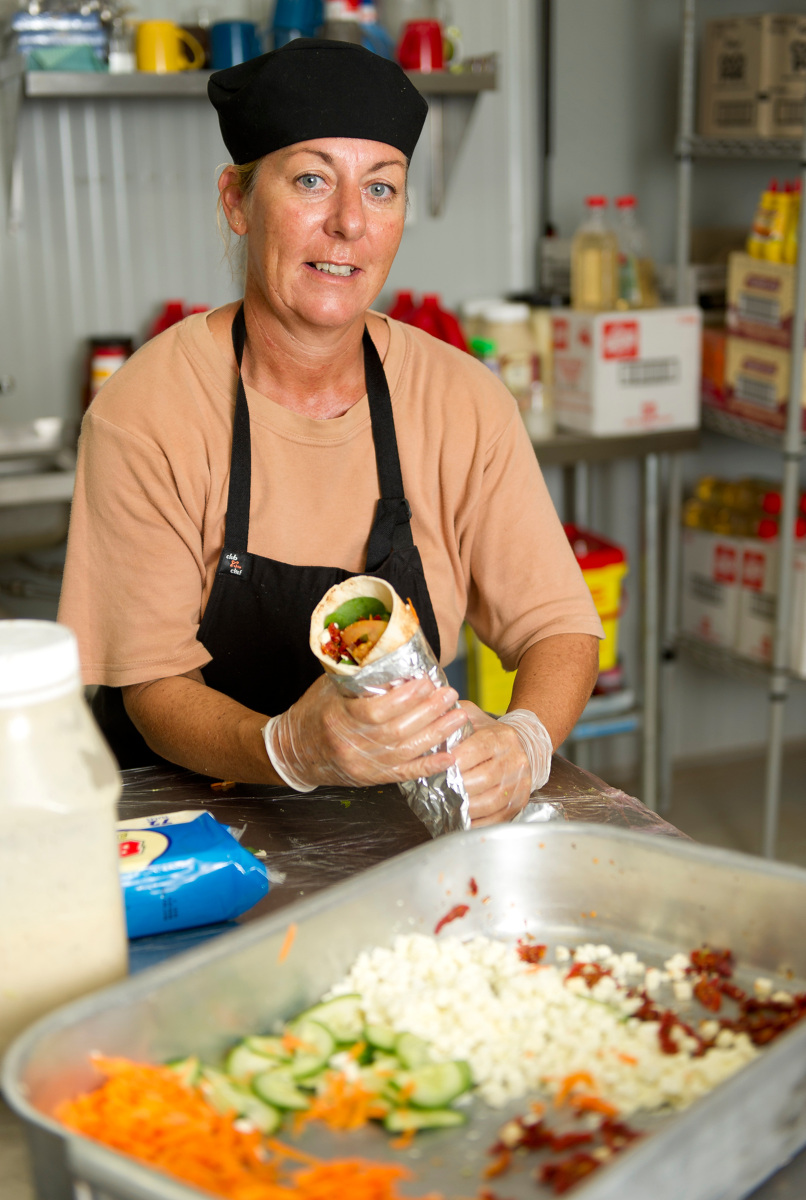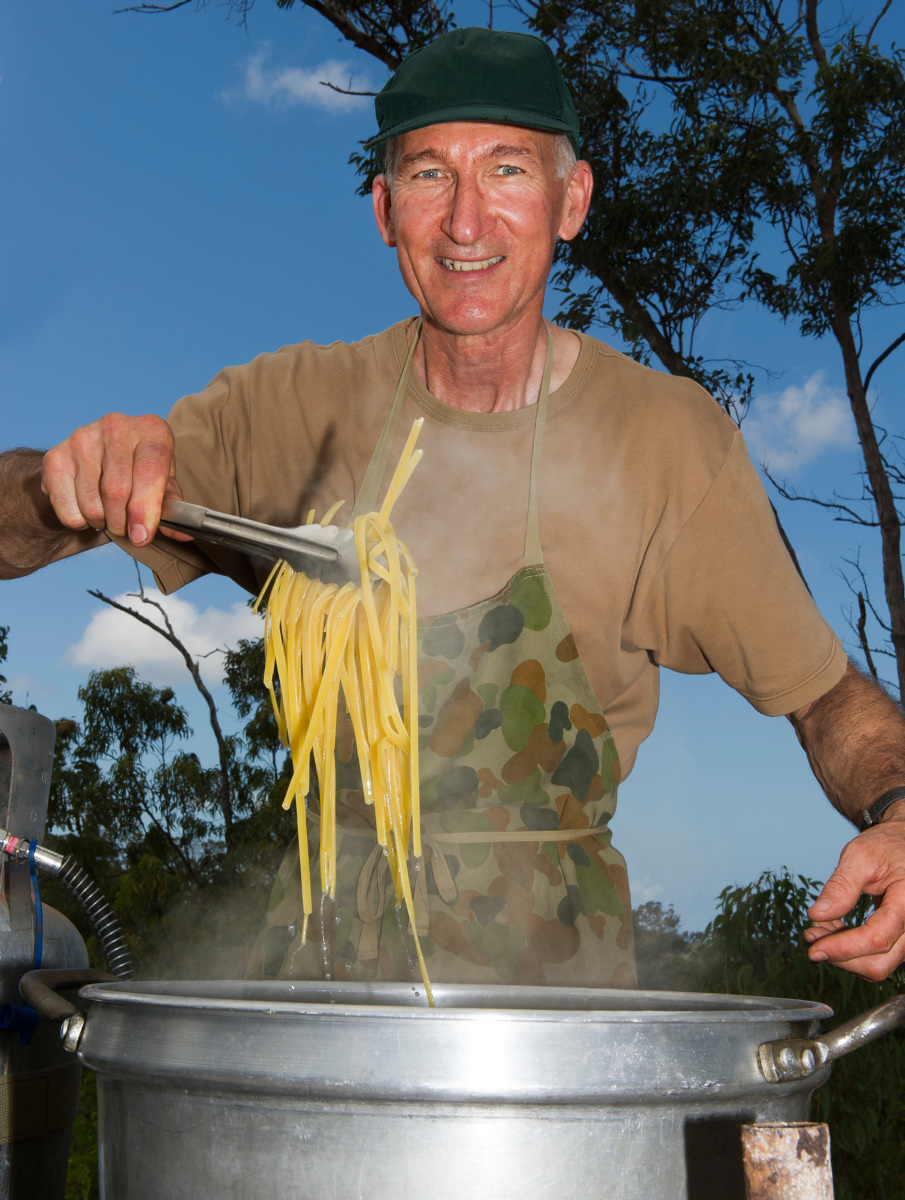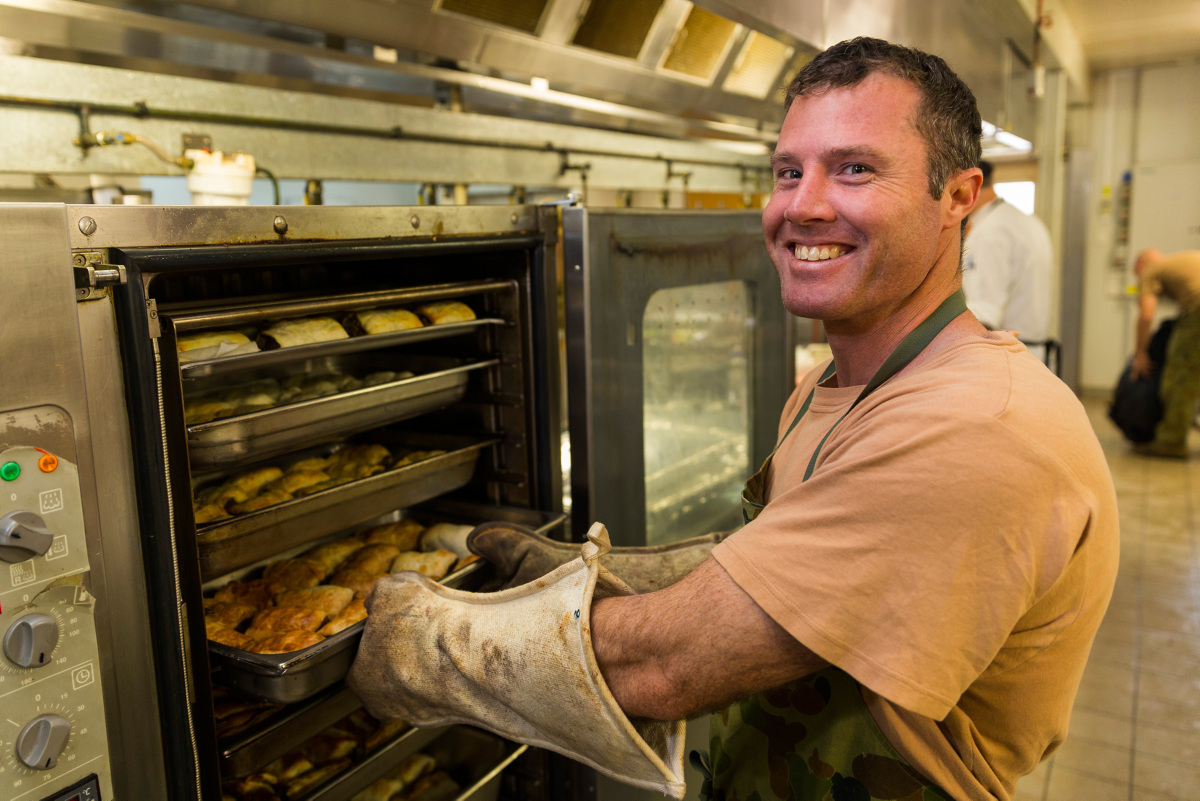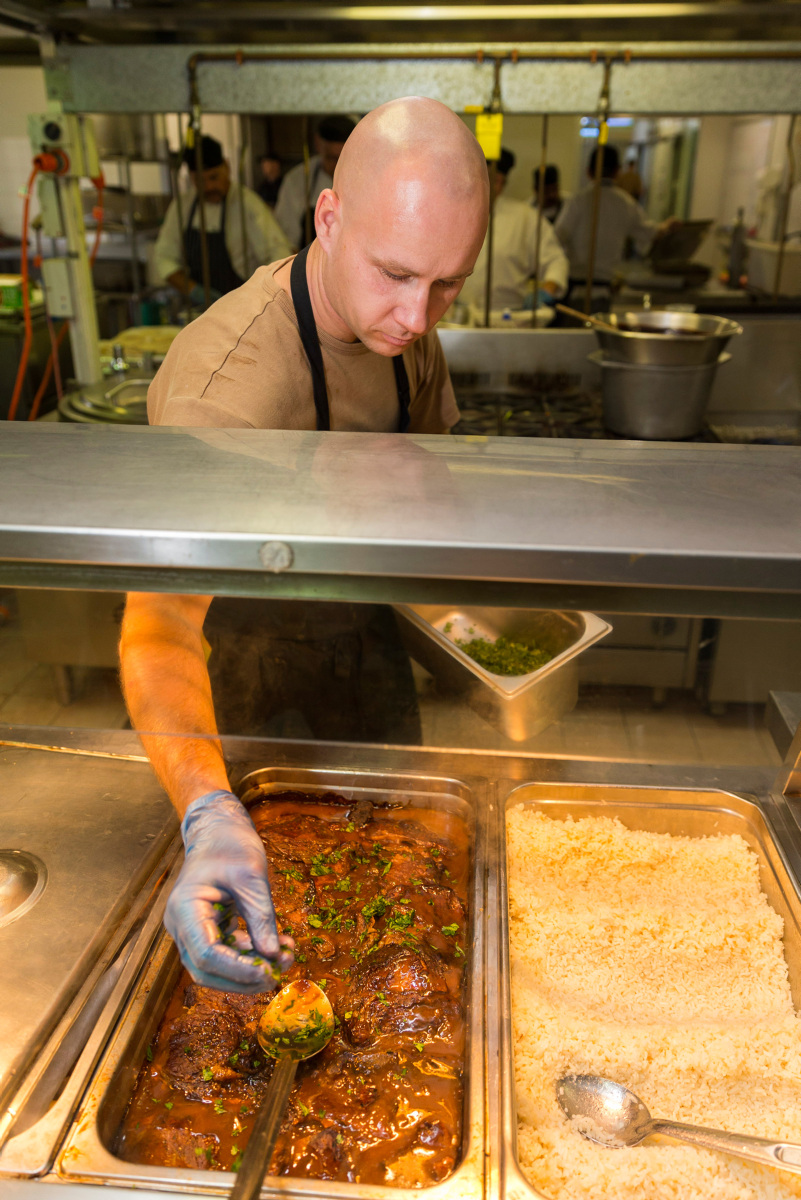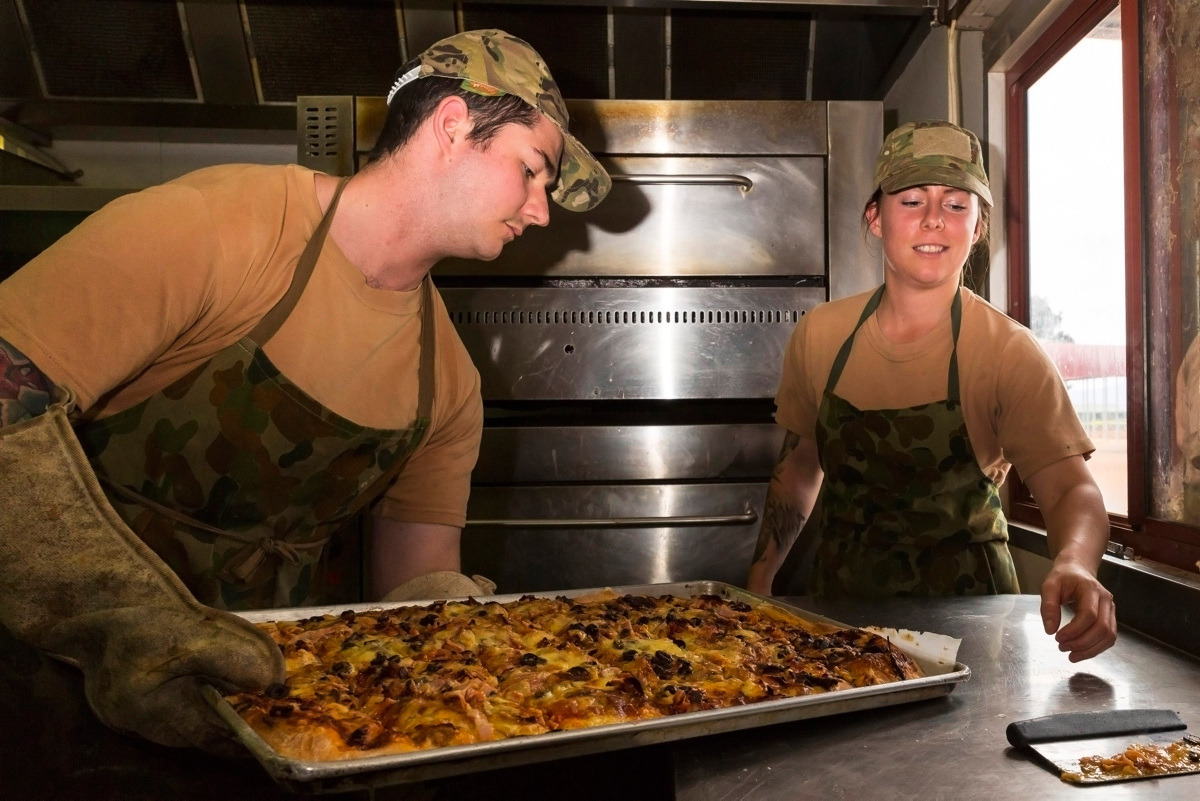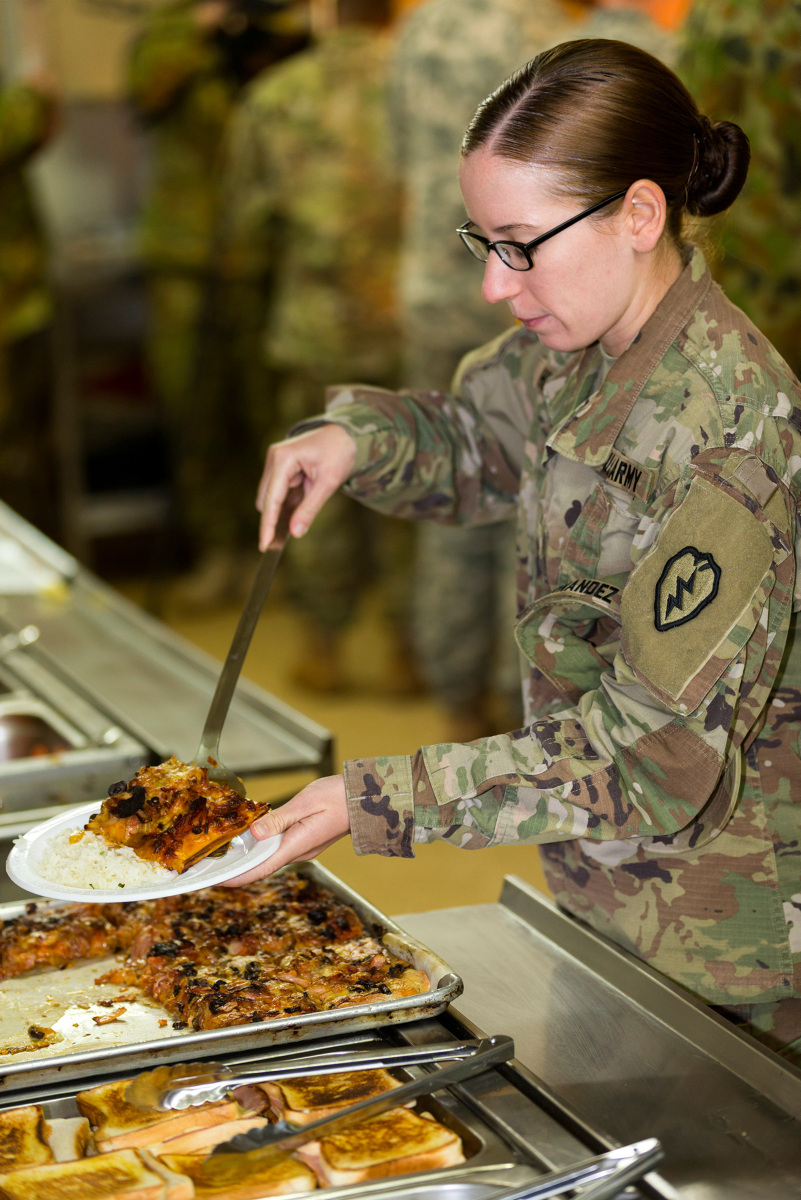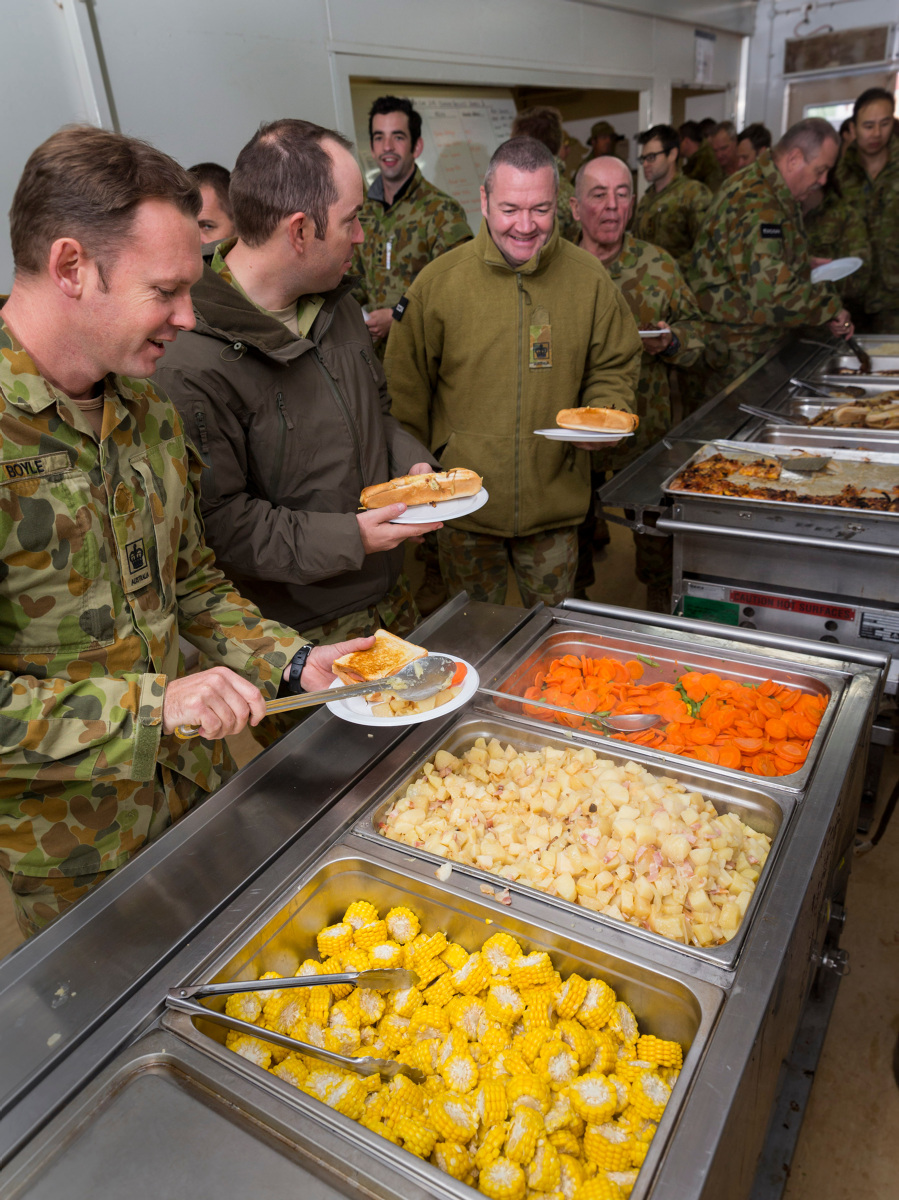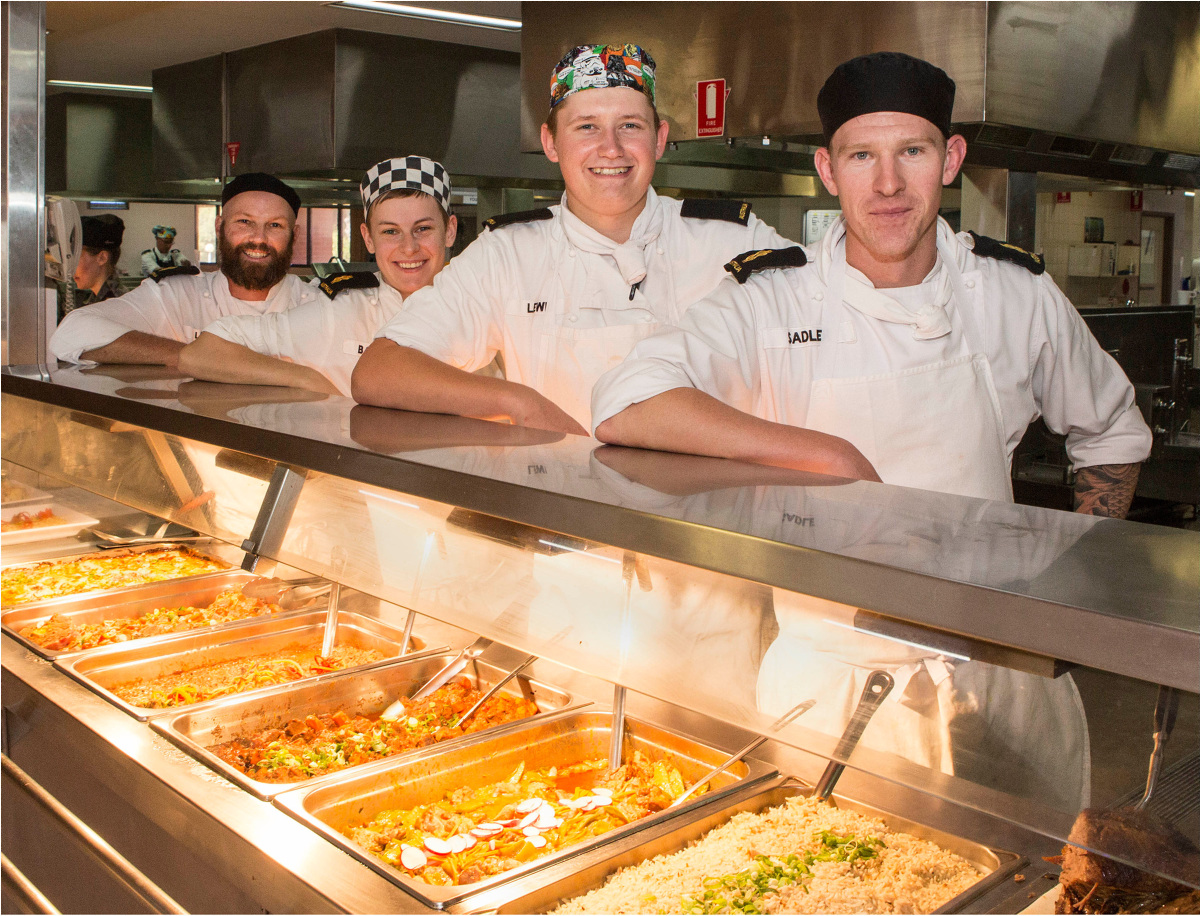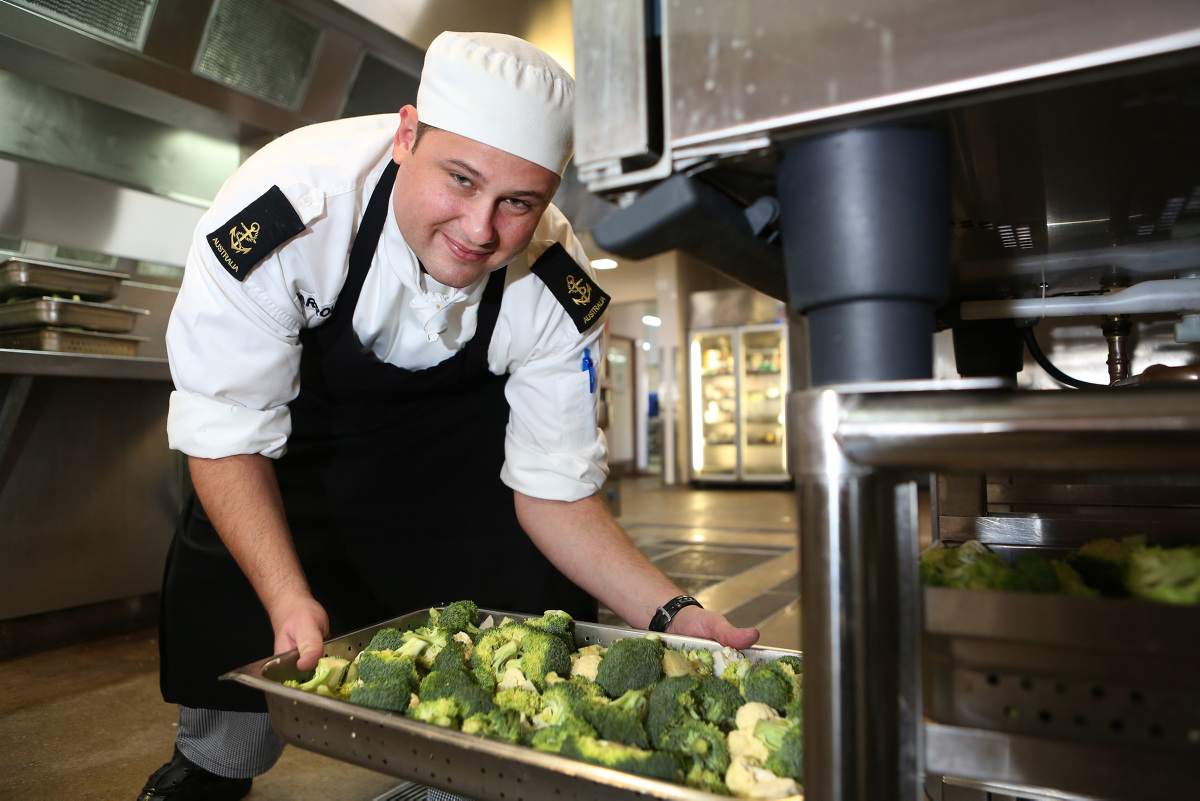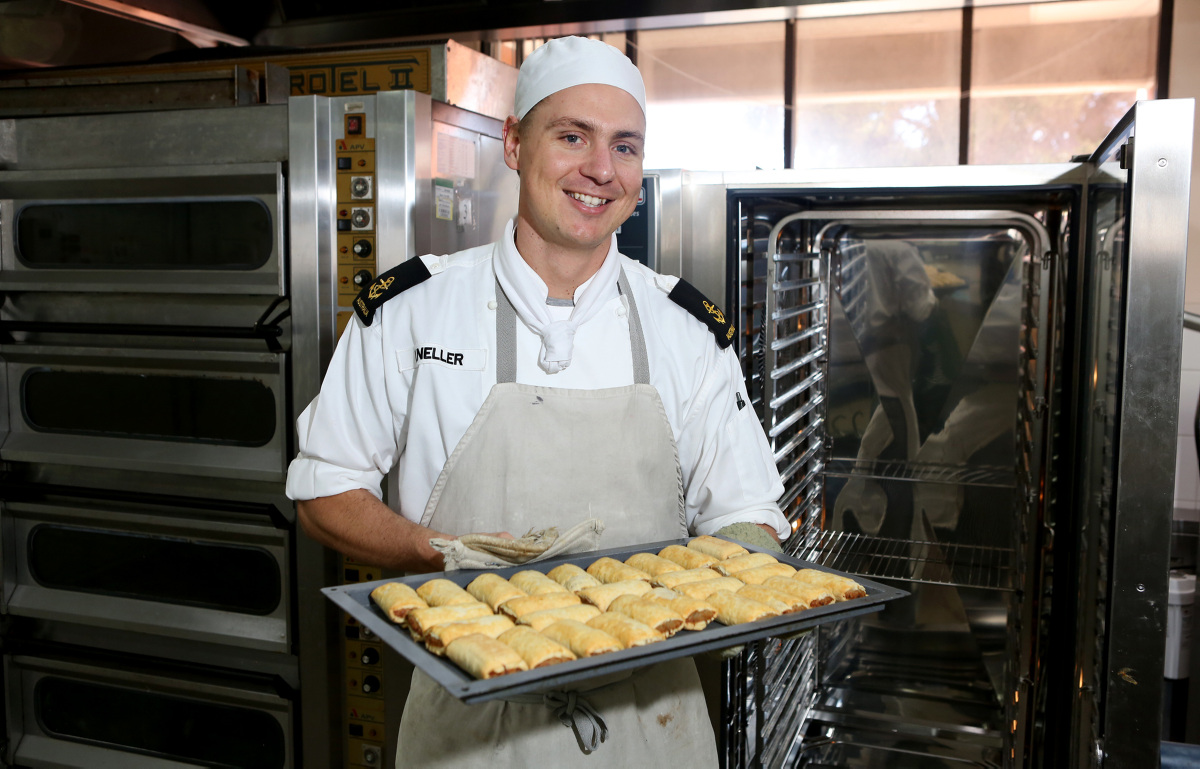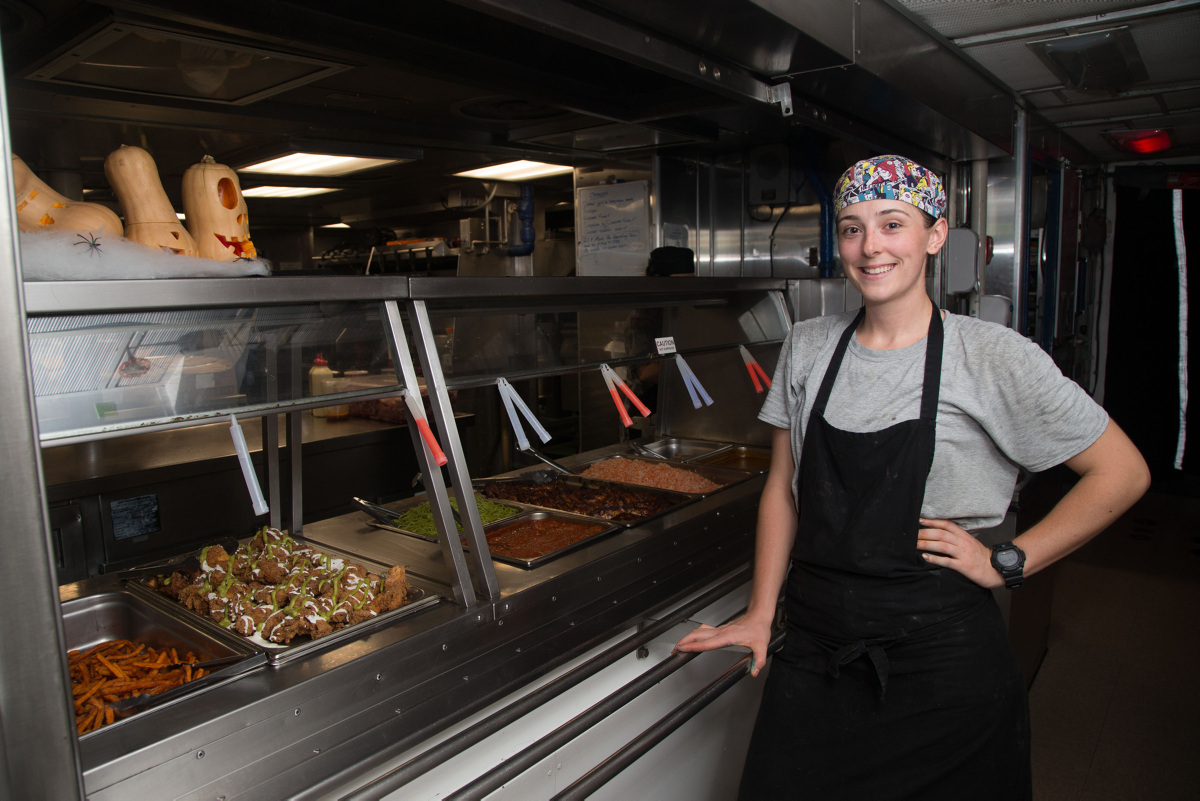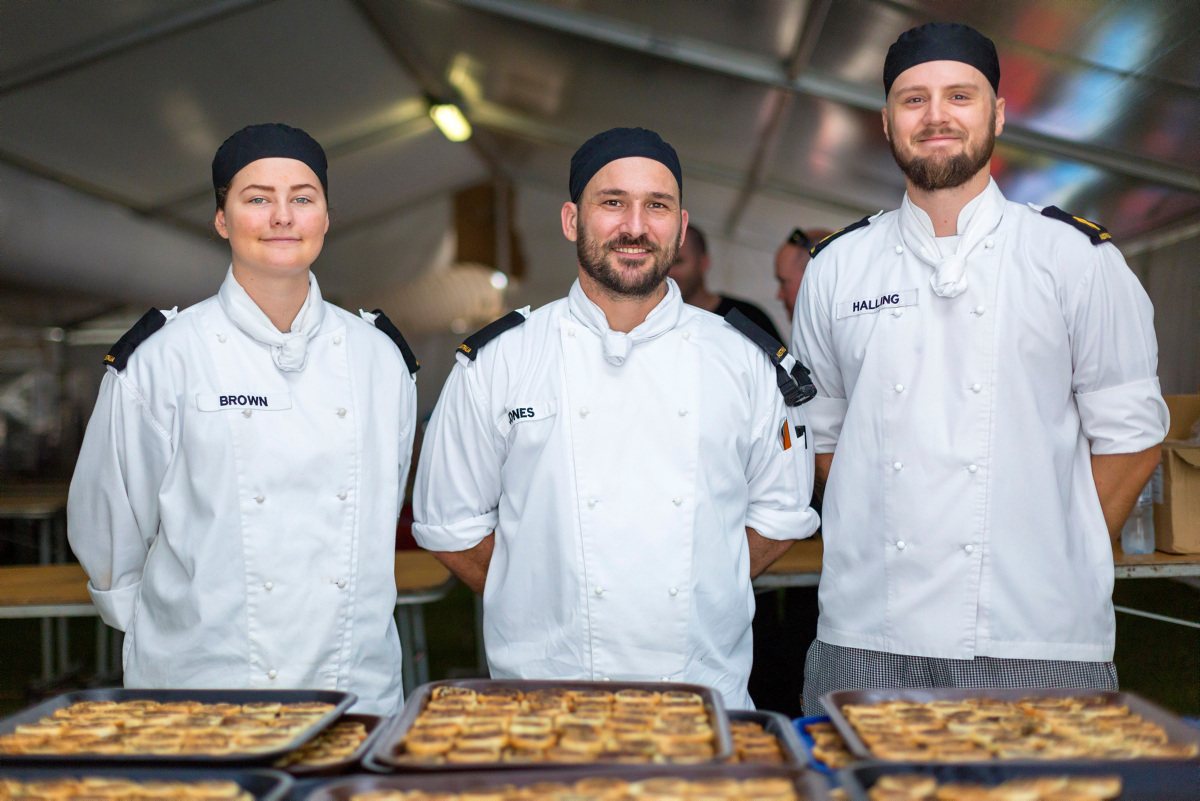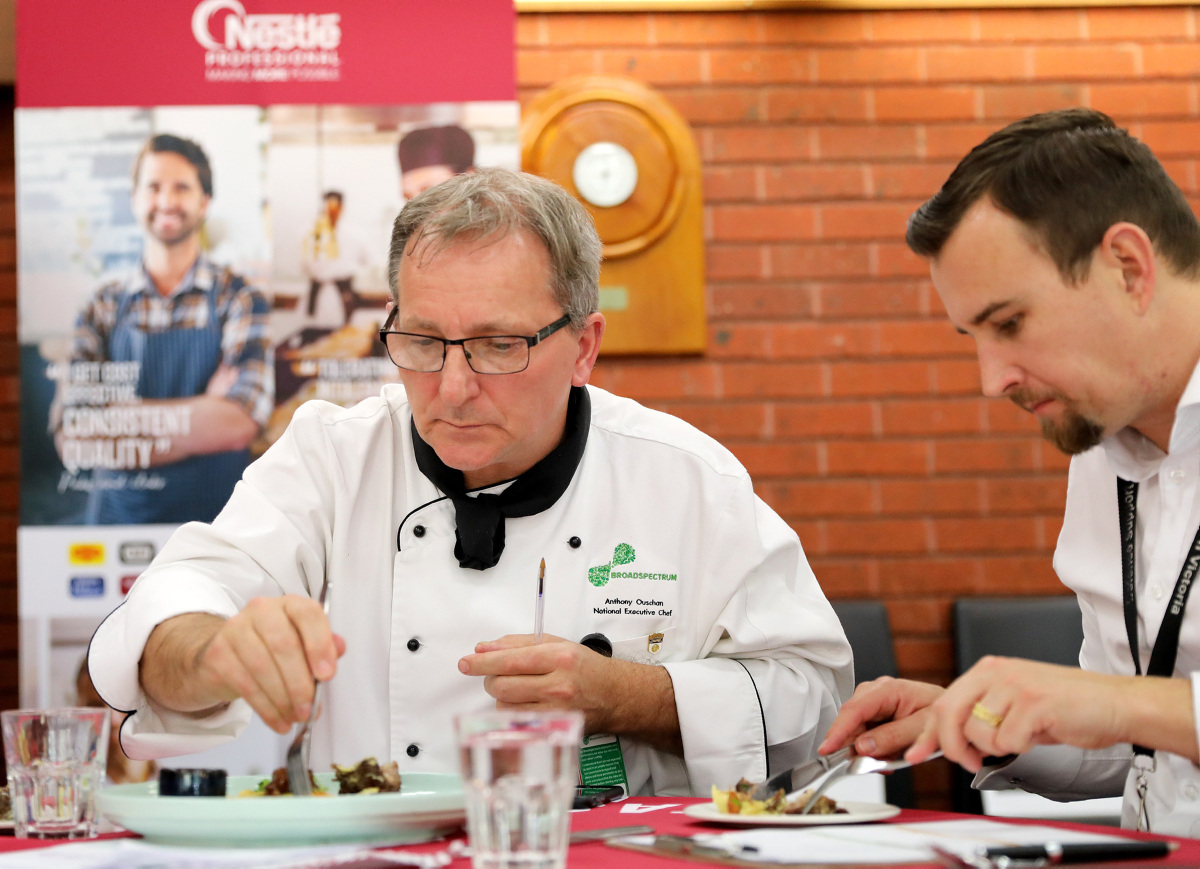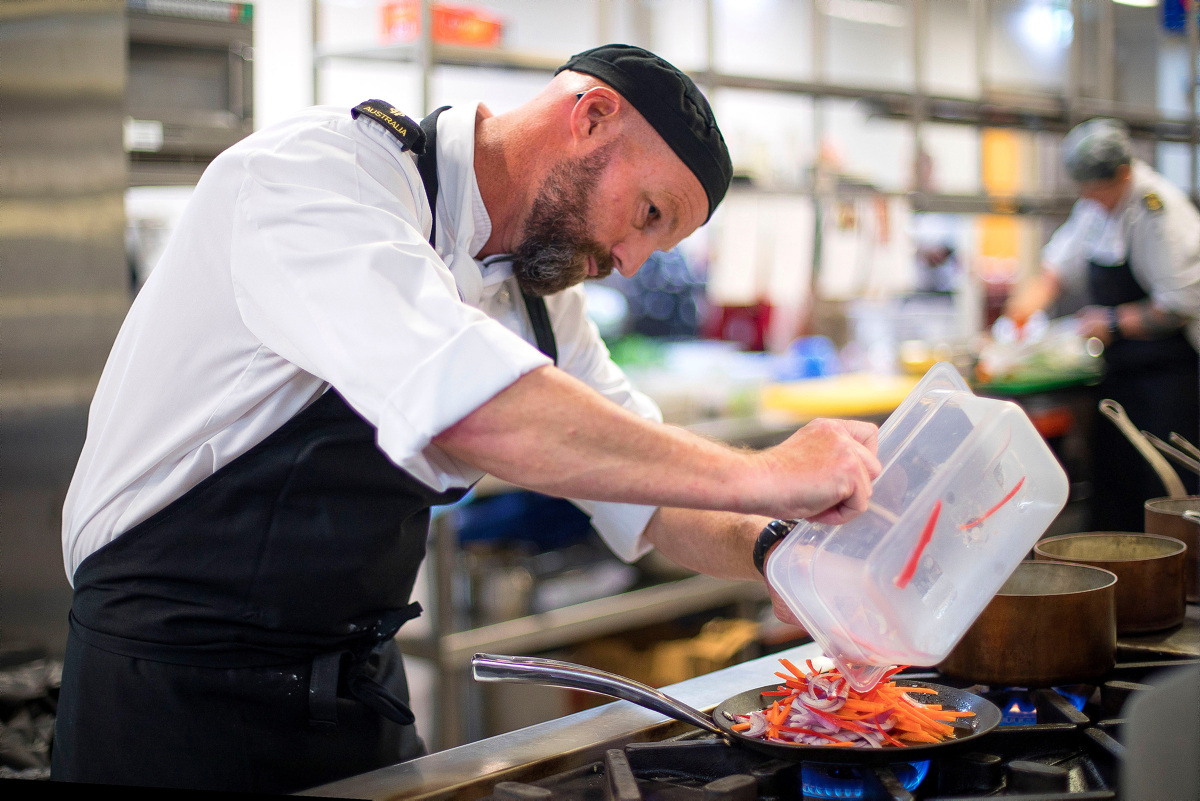Defence force catering: chefs who are up for a challenge
IN A TWO-PART REPORT, Foodservice Rep takes a look at catering in the Australian Defence Force – the appeal of a career in these fields, as well as the distinctive challenges faced by chefs in the Army, Navy and Air Force. In this first part, we talk to two chefs – one from the Australian Army and the other from the Royal Australian Navy, both of whom paint a vivid picture of what makes their work a little different from the hospitality norm.
MICHAEL KEARNEY is a Warrant Officer Class 2 and the Operations Warrant Officer (OPSWO) for 1 Catering Company within the Australian Army. Michael joined in 1995: “I always had a passion for cooking so that’s want I wanted to do, and I’ve progressed through the ranks to my current position and I love every day of it. As an Army chef, you’re not stuck in one location – you can be providing catering for a unit at the start of the week, and by the end you can be out on the range firing rifles or driving trucks. That variety was appealing to me. I’ve been very privileged over my career in that I’ve had the chance to deploy several times and also provided catering and cooking for VIPs – it’s always interesting because there’s always a new challenge.”
Michael is currently based in Townsville, Queensland, where at time of writing the Army is undertaking Exercise Talisman Sabre; a biennial war game exercise as part of Army’s force generation cycle. 1 Catering Company, which includes platoons in Townsville, Brisbane, Darwin, Adelaide and Amberley, are providing catering support to rapidly swelling numbers – “We will max out at twelve and a half thousand meals per day. We’re the only catering company deployable asset across the Army – our total staffing is more than two hundred and for this exercise we’ll have just over 120 chefs, all full time army members.”
Army chefs benefit from centralised structure
Michael has seen structural change in recent times – “prior to 2014, a lot of the Army chefs belonged to individual units and provided direct support to those organisations. Since then we have centralised and the majority of chefs have come under one structure, which has been beneficial because it enables our team to do a wider variety of jobs. We’re sent on multiple activities - for example to support the Australian Army’s efforts with AACAP (Army Aboriginal Community Assistance Program) in WA, we provide civilian aid to the population over there and catering for engineers while they’re helping out in the indigenous community.
“There are plenty of different tasks that we can tap into which makes it very interesting. I often look at chefs in normal restaurants and yes, they provide very nice meals but they’re working to a set menu over a period of several months. Army chefs, on the other hand, get the raw bulk commodities and our chefs are then challenged to develop their own menus daily with what’s available to meet the dining needs of those they are supporting. If those soldiers are engaging in strenuous activities, for example, they need high energy meals. It’s not a set menu – we’re always thinking, planning ahead as to how we can provide that support to soldiers in the field.”
“A lot of emphasis is placed on building that knowledge within our chefs, exposing them to different cuisines and cultures and making sure they can provide what’s required at the time. We have our chefs supporting people in places like East Timor and they need to be able to adapt.”
Nutrition now a major focus
“It’s no use having all the best war fighting equipment if you don’t have the brightest people operating it,” Michael emphasises, “and they have to be performing at their best so good nutrition is a big part of what we do. We also have to cater for every type of dietary requirement as do our coalition partners. A lot of emphasis is placed on building that knowledge within our chefs, exposing them to different cuisines and cultures and making sure they can provide what’s required at the time. We have our chefs supporting people in places like East Timor, Solomon Islands and Malaysia and they need to be able to adapt.”
For this reason, a strong emphasis is placed on continuing education. “We have our traditional promotion courses run by the Australian Defence Force School of Catering and within the Catering Company we have our own training program. We have chefs at all different levels, from highly experienced ones to those who have just finished the TAFE component of their careers. We’re continually honing the skills of our men and women.”
Of course this ongoing training includes other aspects than the purely culinary. “The activity we’re undertaking right now constitutes the first time in the field for a lot of our chefs, so they’re learning how to provide bulk catering with particular varieties of equipment. Our equipment requirements have become more specialised over time – initially a lot of it was off the shelf and locally procured, but now there’s a real focus on getting us the best tools to do our job. Recently there’s been a move away from the use of gas equipment towards electrical equipment run by diesel generators. This is because we can’t always guarantee the quality of gas in areas where we’re deployed, but we can always get our own diesel fuel which travels better as it can be put into an aircraft or a naval vessel – it’s safer and easier to transport.”
Supply, logistics and food safety challenges
The challenges faced by Michael and his team often relate to ingredients supply and the need to work with what’s available. “There’s a certain amount of lead time required for suppliers to be able to provide us with fresh commodities – for example fresh chicken isn’t as available here as it would be in a capital city, so we have to go with frozen product. There are also challenges around moving the foodstuffs into the training exercise area.
“One of the simplest but most challenging things we face in our kitchens is food safety. We have very strict processes in place and we must abide by HACCP principles even though we might be working in the middle of a paddock. We have to be food safe and avoid contamination from pathogens and bacterias, and that’s where it’s a really unique challenge for us as opposed to that of a chef working in a normal restaurant.
“Additionally, the packaged meals we prepare and send out to the field in insulated containers have a two hour life cycle – if they’re not consumed by then we can’t guarantee their safety and we advise that they not be consumed. That means we need to have our team as close as possible to where the soldiers are that need that food. That’s another special challenge we face.”
Twenty-four years of service has clearly done nothing to dull Michael’s enthusiasm for Army life. “I would say to young people interested in getting into the hospitality industry, please consider becoming an Army chef. You’re going to get more of your weekends and Friday nights off and you’re not going to be stuck in a kitchen all the time. You might be cooking one minute and throwing a hand grenade the next. It’s a really interesting and challenging job.”
Navy chefs must take on multiple duties
JOEY AVERY is a Warrant Officer and the Maritime Logistics-Chef Workgroup Manager with the Royal Australian Navy (RAN). Currently based in Canberra, he has ultimate responsibility for ensuring the chef structure can support capability and the future supply and demand requirements via recruiting and training targets, ensuring Navy chefs are able to develop themselves professionally. As he readily acknowledges, it’s a big job. “Last year I was in HMAS Adelaide managing 21 chefs and now as workgroup manager for all the chefs, which as of July 1st is 421 strong and growing, so it’s a big jump. We have a lot of ships coming online over the next few years so we need a lot of chefs to operate the galleys and we can’t just pull them out of school – they need to be specially trained and the course is roughly 20 weeks long.”
Navy chefs face their own particular challenges – “apart from the core role of cooking we take on ancillary duties at sea, for example being part of a ship’s medical emergency team or standing sea fire party responsible for damage control. Once the vessel pulls away from the wharf, it has to be self-sufficient and the Maritime Logistics Department is a major contributor of well-trained personnel to that whole-ship capability. When I joined as a cook, I didn’t anticipate being employed everywhere else but the galley, but it’s been amazing – I’ve been in for 32 years and I’ve loved every minute of it.”
Accurate provisions calculation is critical
For Joey, the initial appeal of joining the Navy was the travel opportunities – “I wanted to see the world and experience the different cultures and I’ve done that by the bucketload. I’ve pretty much been around the world two and a half times, from tropical paradises to conflict areas like the Middle East, as well as deployments to the China Sea. I’ve done an exchange with the Royal Navy and have catered for people like Prince Andrew and the various Lords and Ladies who were guests of the Royal Family. Back in 1991 I catered for Prime Minister Bob Hawke upon HMAS Success’s return to Sydney from the Gulf War, and later as the Petty Officer at HMAS Watson I was in charge of catering for Madeleine Albright when she was the US Secretary of State; attended by the then Australian Governor-General.”
Catering on a seafaring vessel necessitates knowing how much and what food you’ll need for the duration of the voyage. “Obviously we need to take into account the equipment we have on board, the storage capacity and also the special dietary requirements we have to cater for,” Joey affirms. “Once we’ve decided on a menu, we basically calculate the provisions quantities using the ration scale of how much protein, vegetables and so on is needed to sustain the crew, while also allowing for eventualities based on information at hand. We undertake portion control and allow so much per meal, and we trial the menu to ensure there’s enough food that we’re not going to run out. We also do what’s called a top-up resupply in various ports we visit to maintain the provisions endurance. Food endurance is critical, it enables the ship to undertake tasking based on this information, so we need to make sure we have enough on board at all times.
“Currently our biggest ship is HMAS Adelaide, and just to give context to the quantity of food brought on board, picture six sea containers fully loaded every time it sails. We have dry storage for grocery items and cool rooms for vegies, dairy and small goods and freezers for meat.”
“Additionally, we are also bound by the quarantine rules and relevant laws every time we return to Australia; we have to be compliant. To minimise the time and effort needed to achieve this, at every opportunity we only carry meat from Australia to be compliant, as meat normally takes the most amount of time.”
Induction program identifies potential on-board hazards
Every Navy chef undergoes an induction program which fulfils the important function of familiarisation with the working conditions within a Naval vessel.
“A ship’s galley is not just hot, it’s also noisy, and you need to get used to that,” Joey explains. “In any closed environment, safety is a key concern and on any ship the two most likely places a fire could start are the engine room and the galley. So every new chef joining will need to know the hazards and how to look out for them. They need to understand what to do in the event of a power failure, a fire, or what happens if someone gets electrocuted.”
While a galley’s footprint is relative to the size of the vessel, space is often at a premium and especially so in warships. “It is tight, so you need to be able to get along with people as you’re working in such proximity. You can’t just step off the gangway and go for a walk when you’re in the middle of the ocean!”
Cooking at sea necessitates specialised techniques
Naturally the distinct requirements of cooking aboard a Naval vessel generate distinct techniques. “We cook differently to the Army – they have their field kitchens, we have our galleys. Sometimes we bring in Army chefs and when they come on board I have to train them in how we cook in the Navy – I call it marinising, so they know what we do at sea. Cooking is cooking, but when your environment changes you have to adapt.”
Joey acknowledges that the Navy life is not for everyone. “It just depends on the person. For me it’s about the travel and the lifelong friendships you make – and they are forever, they really are. As chefs we are regarded as one of the hardest workers on the ship at sea; it is very labour-intensive and that forges a special bond between us. There’s a saying among the chefs which is true: we work hard and we play hard! I was born in the Philippines, I came to Australia when I was 11, and to have worked in this job and to have reached the pinnacle has been an amazing ride. And I’ve made a lot of friends.”


